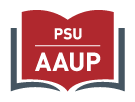The New York Times
by Stephen Adair and Colena Sesanker
May 13, 2021
The last 40 years have seen an ever-widening income gap between those with college degrees and those without. Over that interval, incomes have soared for those with advanced degrees and declined for those with high-school diplomas or less. As a result, the route to economic security for young people depends increasingly on access to higher education. Yet it keeps getting more expensive.
Since the Great Recession, the public portion of the operating costs for state universities and colleges in Connecticut, where we teach, has declined 20 percent; since the 1980s, it has declined by nearly half. In the 1960s, tuition for a Connecticut state university was $100 a year, which could be earned by working fewer than 100 hours at minimum wage. Today, a student needs to work nearly 1,000 hours at the state minimum of $12 an hour to pay the $11,462 required for tuition at the least expensive state university in Connecticut.
Our state is hardly unique in abdicating its responsibilities to the next generation. By 2018, only four states had returned to prerecession funding levels at public two- and four-year institutions. In Arizona the decline has been especially acute: 2018 per-student higher-education funding was down 55.7 percent from 2008, and average student tuition costs at four-year institutions increased by 91 percent. In Louisiana, these figures were 40.6 and 105.4 percent, respectively.
The Biden administration has proposed reforms to ease the student-debt crisis. But a real solution must upend a system of cascading inequities. Restoring the dream of higher education as an equalizer requires a holistic solution that attacks all the sources of the problem: a lack of investment in common goods, growing tuition and student debt and exploitative labor practices that undermine the quality of education.
